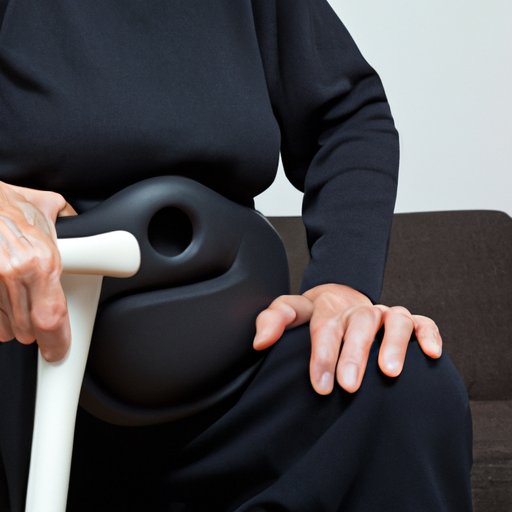Introduction
According to the Centers for Disease Control and Prevention, over 300,000 Americans aged 65 and older are hospitalized due to hip fractures every year. Sadly, 20% of those who experience a hip fracture die within a year. Hip fractures are a serious concern for older adults and can have fatal consequences. In this article, we will explore why hip fractures are so dangerous, the physical and emotional impact on individuals, and ways to prevent and cope with hip fractures.
The Silent Threat: Understanding the Dangers of a Hip Fracture for Seniors
A hip fracture occurs when there is a break in the femur bone that connects the hip to the knee joint. It is usually caused by a fall and in some cases, an underlying medical condition such as osteoporosis can also increase the risk of hip fractures. The problem with hip fractures is that they can go unnoticed, especially in older adults who may attribute the pain to arthritis or other conditions.
Hip fractures are a silent threat to seniors because they can cause serious and potentially fatal consequences. A fractured hip can lead to complications such as blood clots, infections, and pneumonia which can be life-threatening, especially for older adults with weaker immune systems. The recovery process can also be challenging and may result in a loss of independence and a decreased quality of life.
Breaking it Down: The Impact of Hip Fractures on Quality of Life
The physical effects of a hip fracture can be significant and life-changing. Limited mobility is a common problem, and many individuals may require a wheelchair or rarely leave their homes. Chronic pain is also a challenging aspect, and it can be difficult to manage with medication. In addition to these difficulties, hip fractures can have a significant impact on an individual’s mental and emotional well-being. Depression, anxiety, and fear of falling are common challenges that may affect a person’s ability to cope and recover.
Hip fractures also affect relationships with family and friends. Individuals may become isolated and experience changes in their social lives as they are unable to participate in their usual activities. They may become dependent on others for company and may feel a sense of guilt or shame because of their condition. Relationships with loved ones may also be strained as they struggle to manage the physical and emotional demands of caregiving.
Prevention is Key: How You Can Reduce Your Risk of a Hip Fracture
Taking proactive steps to reduce the chances of experiencing a hip fracture is essential. Here are some practical tips:
- Engage in regular exercise that strengthens bones and muscles
- Eat a diet rich in calcium and vitamin D to promote bone health
- Ensure that your home is safe and free of hazards that could cause falls
- Get regular check-ups with your healthcare provider to manage underlying medical conditions
By taking these steps, individuals can significantly reduce their risk of hip fractures and improve their overall health and well-being.
Beyond the Physical: How Hip Fractures Affect Financial and Social Well-Being
In addition to the physical and emotional impact of hip fractures, they can also have broader financial and social consequences. Medical costs associated with hip fractures can be significant, and some may struggle to afford treatment. This can lead to financial stress and anxiety, which can further impact an individual’s recovery and quality of life.
Social isolation is also a common problem for those who experience hip fractures. Individuals may become disconnected from their social networks and struggle to participate in activities they once enjoyed. This can lead to feelings of loneliness, depression, and anxiety.
To alleviate these problems, individuals and their loved ones can seek support through community services, social groups, and mental health resources.
The Long Road to Recovery: Navigating Life After a Hip Fracture
For those who have experienced a hip fracture, the recovery process can be challenging. Rehabilitation and physical therapy are critical to recovery and improving mobility. It’s essential to listen to healthcare providers and follow their instructions to ensure a safe and successful recovery.
Coping strategies for anxiety and depression are also important during the recovery process. Engaging in activities that promote relaxation, such as meditation or deep breathing, can help reduce stress and anxiety. Talk therapy and support groups can also provide an outlet for individuals to discuss their feelings and connect with others going through similar experiences.
Conclusion
Hip fractures are a serious concern for older adults and their families. They can have long-lasting and life-threatening consequences. By taking proactive steps to reduce the risk of hip fractures and seeking support during the recovery process, individuals can improve their well-being and quality of life. Remember to always listen to your healthcare providers, engage in regular exercise, eat a healthy diet, and make your home safe to prevent falls. If you or a loved one experiences a hip fracture, seek support through community services, social groups, and mental health resources to cope and recover.
